Personalizing Student Housing: Creating Belonging with Interior Design
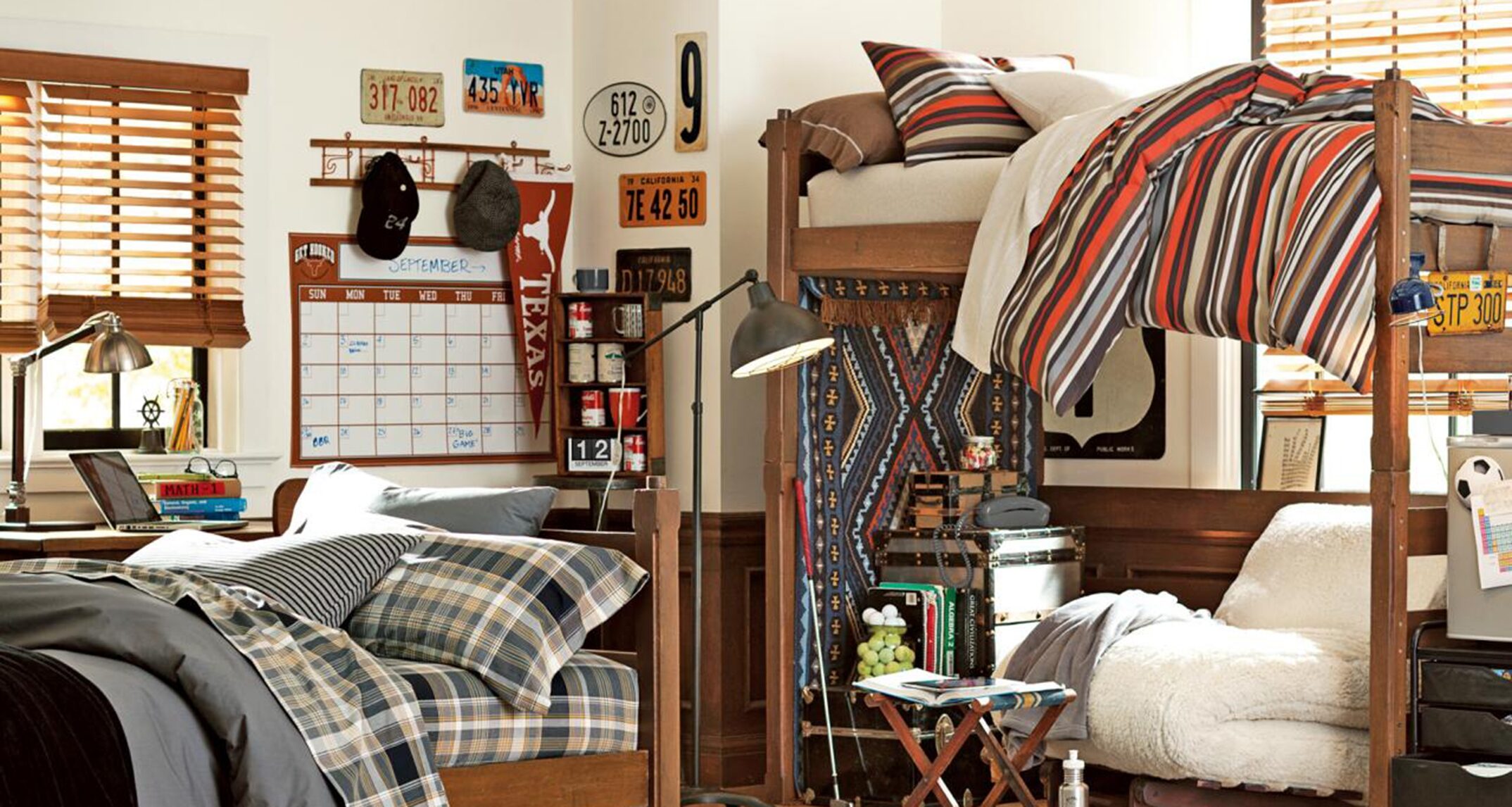
Students spend a significant amount of their college career studying, socializing, and sleeping in their home away from home: the campus residence hall. As a result, it is important that their room provides a comfortable and inviting space to recharge, and establish a sense of ownership.
In a work environment, studies suggest that personalization of one’s space may enhance well-being, job satisfaction, and satisfaction with the physical work environment.1 If you are a campus housing professional, consider helping attune the housing environment to your students’ needs by encouraging them to personalize their space (within your campus guidelines, of course!). Doing so may help to create a sense of place (a theory that delves into feelings of belonging to an environment and security within it) as well as a sense of self.
We find that supporting students’ personalization of their rooms, reflecting their character and value systems, can create feelings of security and belonging, which studies show impact a student’s academic success.
Helping Students Personalize Their Space
Recently, we had the opportunity to redecorate the rooms of two students living on Montana State University’s campus, as part of a “room revamp” contest held in conjunction with Residence Life. We talked with the winners, Daniel and Bailey, to get a feel for their personal style, studying and sleeping habits, and how they spend their free time. We asked questions like, “What are your hobbies outside of school? Are you more introverted or extroverted? What is your typical schedule like? When people visit your room, what do you want it to say about you?” This information helped us determine how best to decorate their spaces to create environments that were reflective of their unique personalities, provided a comfortable place to study, sleep, and socialize, and that just felt like home.
Based on our conversations with Bailey and Daniel, we created personalized inspiration boards for their room revamps that reflected their unique styles and interests:
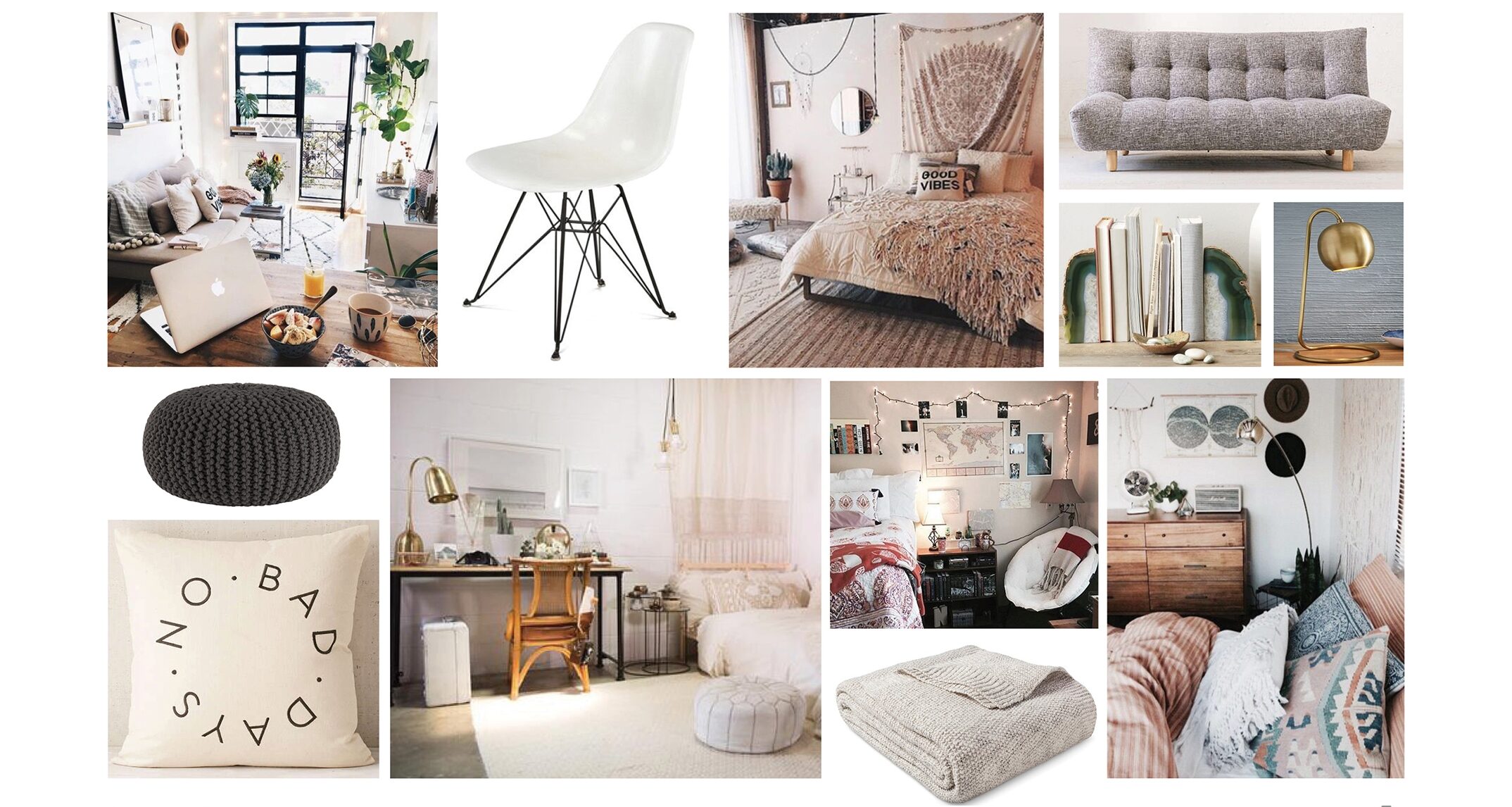
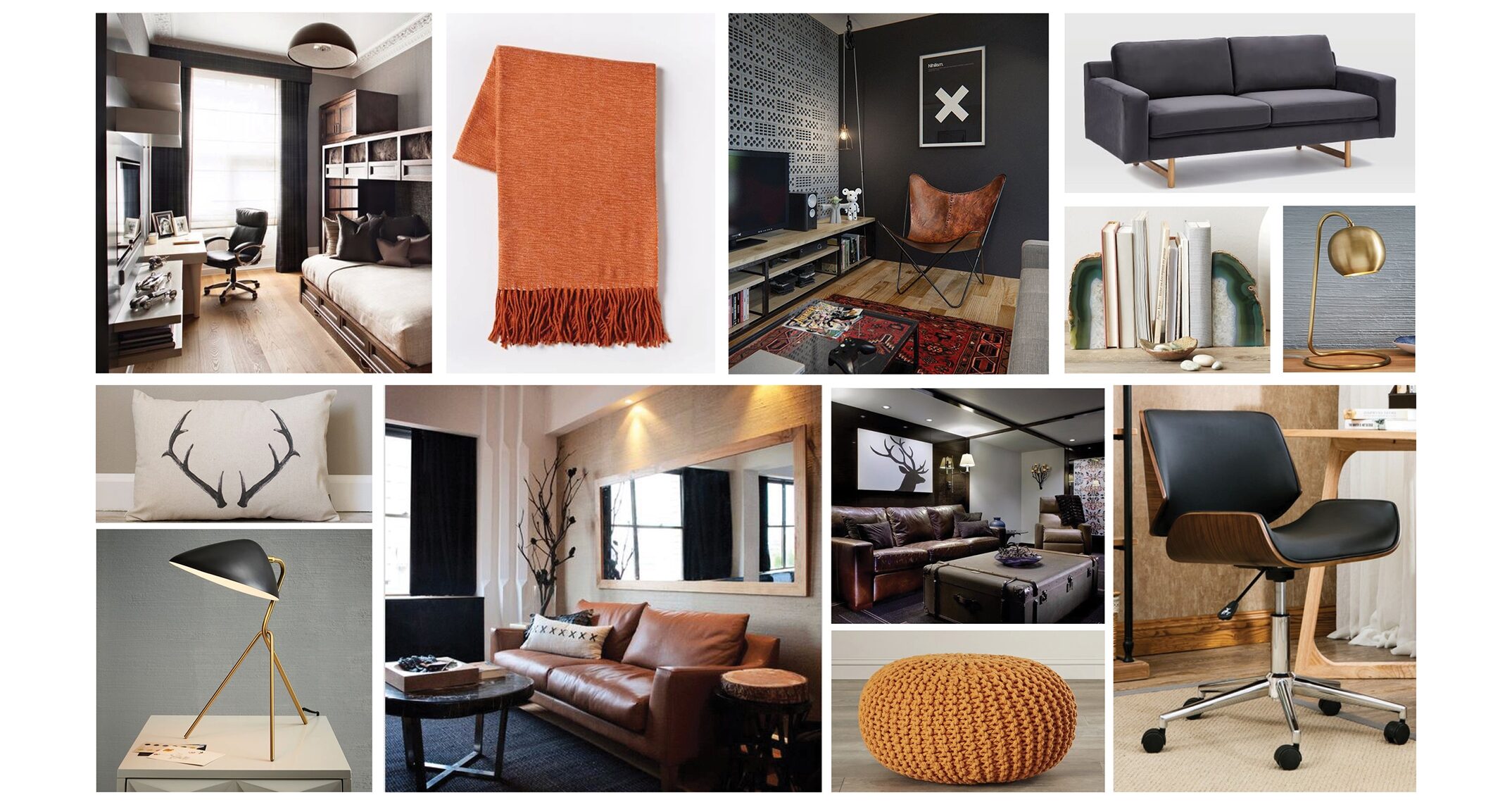
Make it a Community Event!
For those of you who work in housing and residence life, consider turning a room re-vamp into a residence hall event that helps your hall staff get to know their residents better and helps your students think about how they can create a home environment that inspires them every day.
Start by bringing students together and encourage them to tell their stories – about their passions, their goals for the future, and their dream academic experience. Here are some questions to get you started:
- What kind of future do you see for yourself?
- Who are the role models you admire most?
- What do you wake up thinking about every morning?
- How might your dream college experience better prepare you for a career and success beyond school?
Then, offer tips and tricks on how to incorporate their answers to these questions into the design of their room. Do they want a life of travel? Encourage them to turn images of their dream destinations into a photo garland. Are they an aspiring writer? Incorporating quotes from famous authors throughout their room is an easy way to get motivated. Below is a list of additional design tips that we used for Daniel and Bailey’s rooms.
Design Tips
Make it Pop!
What’s your favorite color? Whatever it may be, celebrate it by layering in a few throw pillows, perhaps a cozy throw, and tie it all together with some wall art posters. Your unique color will pop when placed on a neutral background. Think whites, grays or warm taupe.
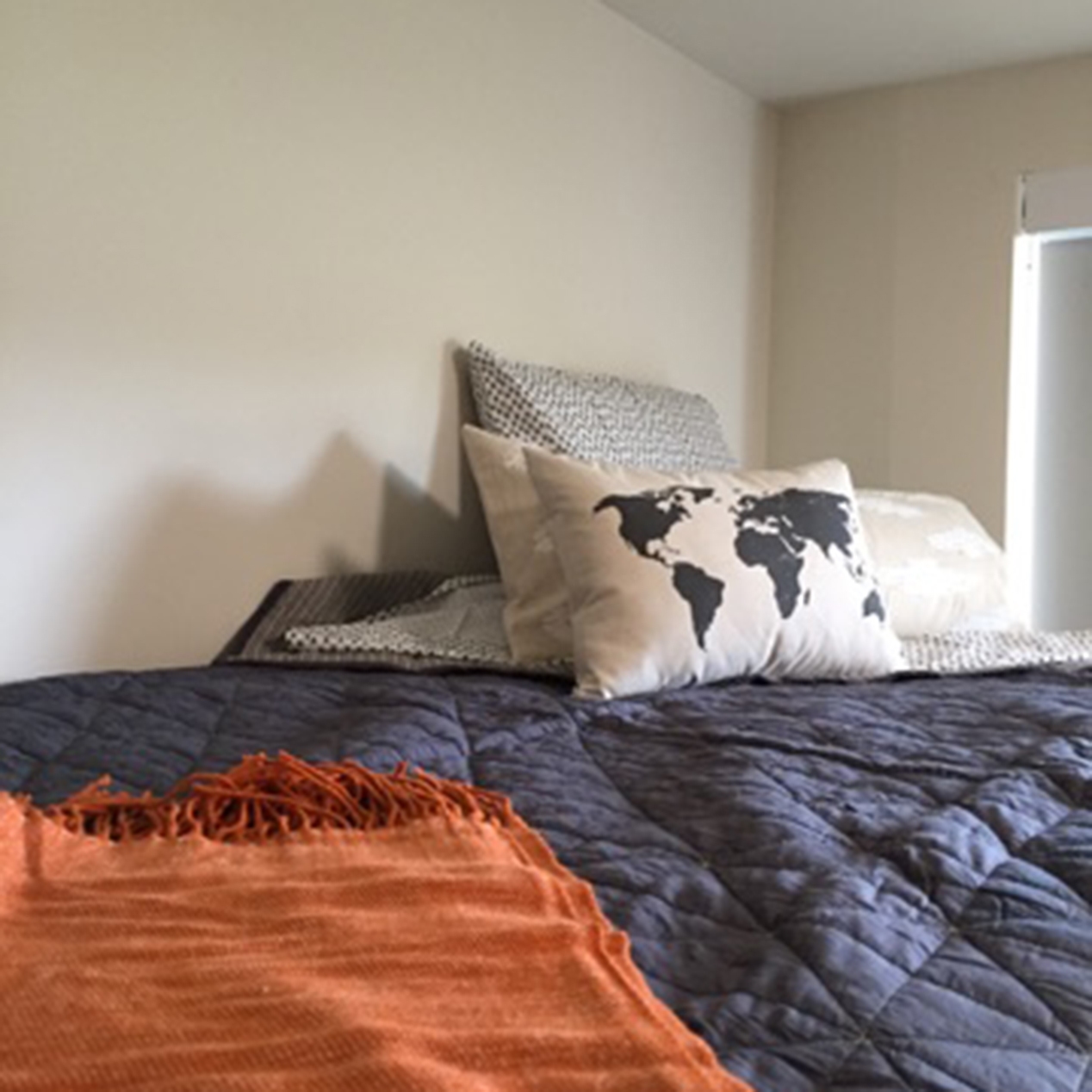
Daniel’s favorite colors were incorporated throughout his room.
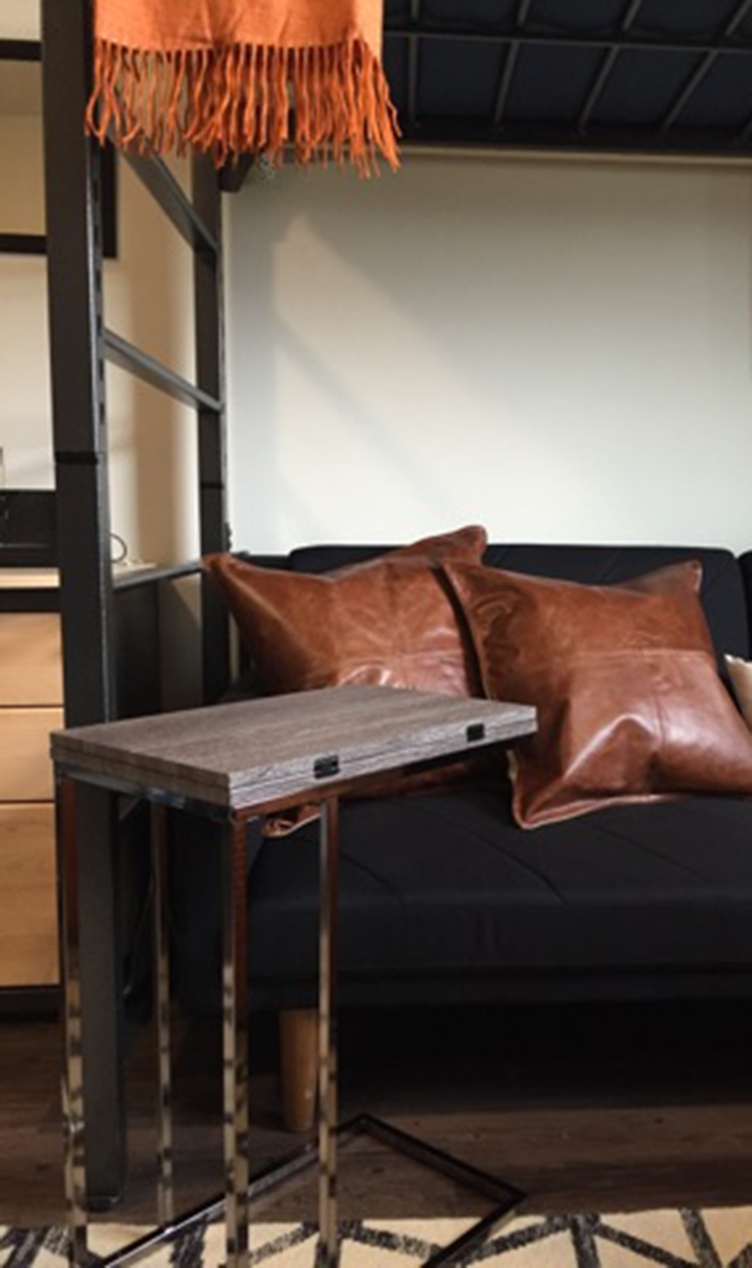
Personalize
We all want our space to reflect our own unique identity. Frame some of your favorite photographed memories and create a gallery wall with inspirational sayings and/or graphics that speak to you. It could even be a simple photo garland above your bed, or a handmade tapestry.
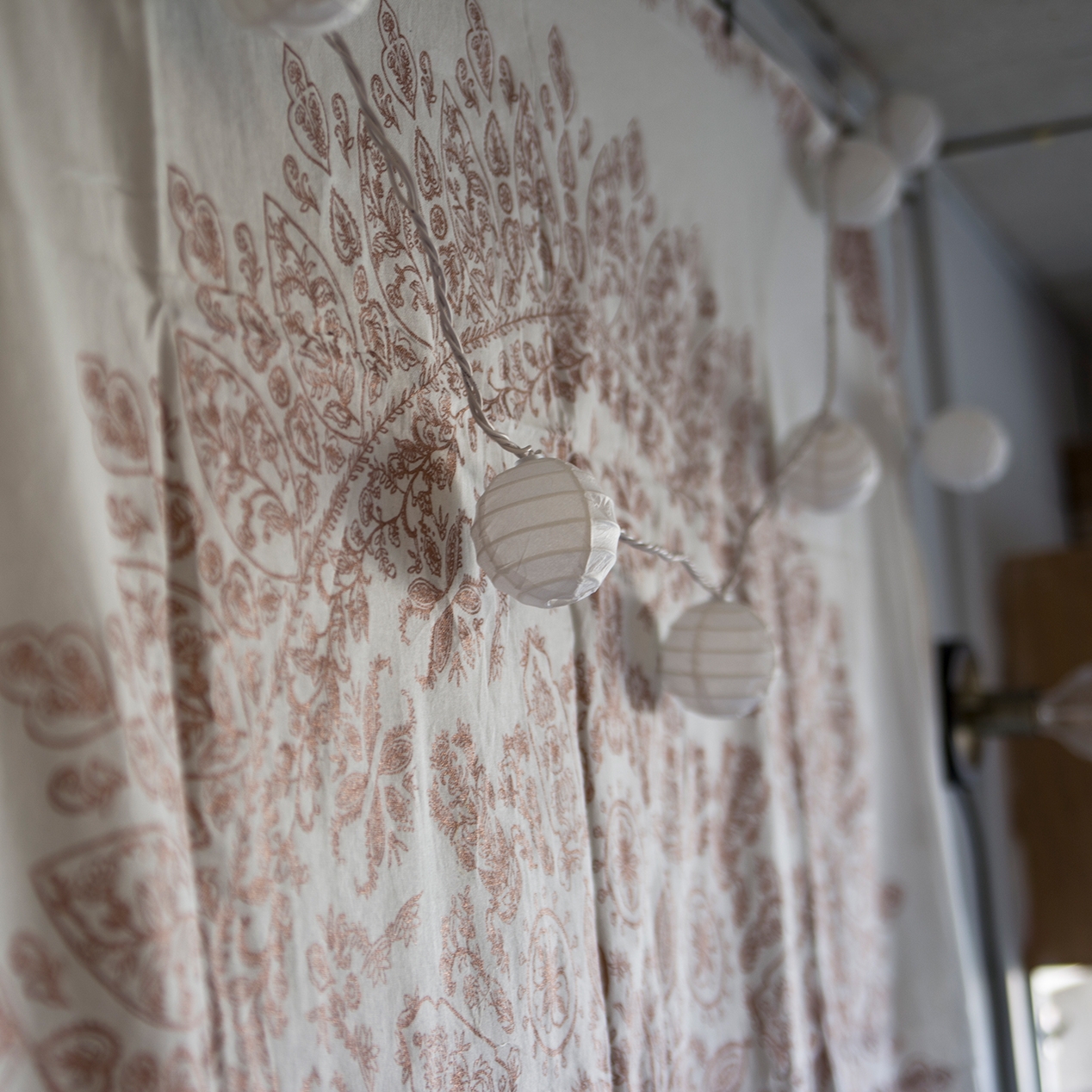
We used tapestries and warm lighting to celebrate Bailey’s “boho-chic” style.
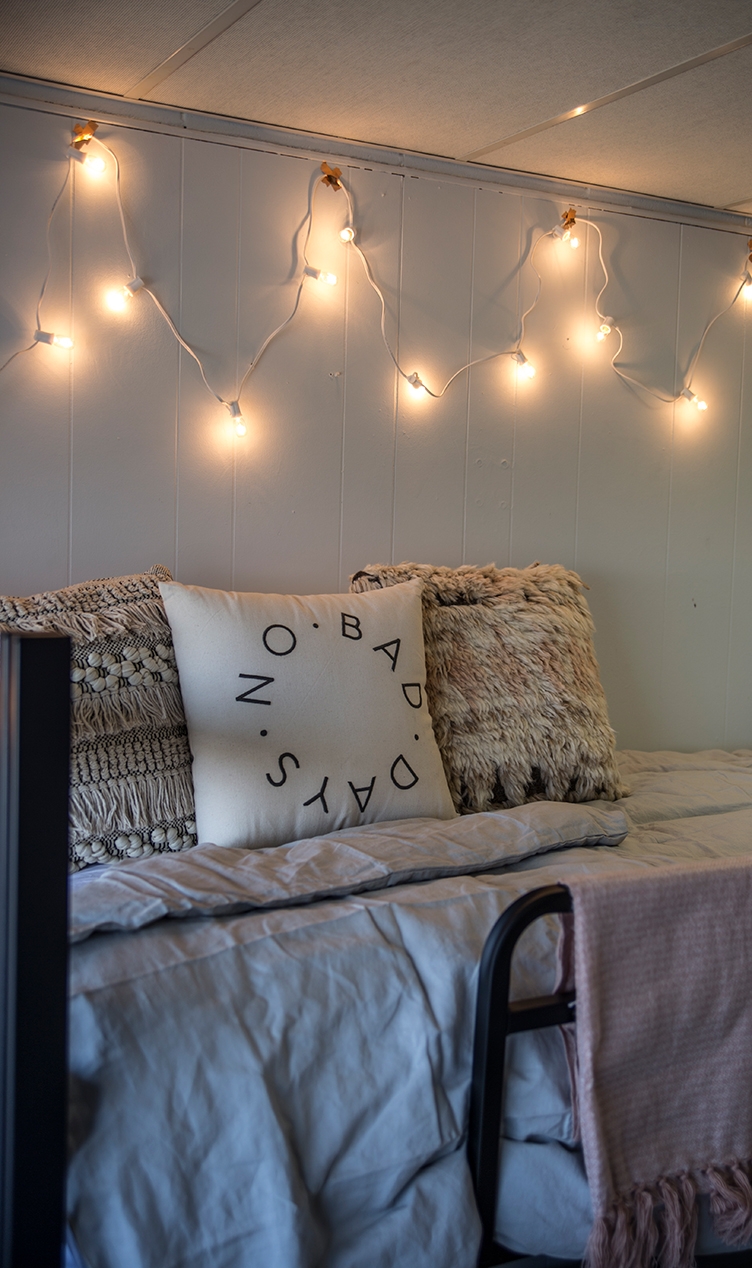
Organize & Stylize
Since your space is limited, you need to maximize every square inch efficiently and beautifully. Select a piece that can serve as storage and provide character – think old trunks, one of a kind vessels, or crates. Consider smaller items like bookends and desk supply organizers as well; these pieces can make a bold statement while also helping with your storage needs.
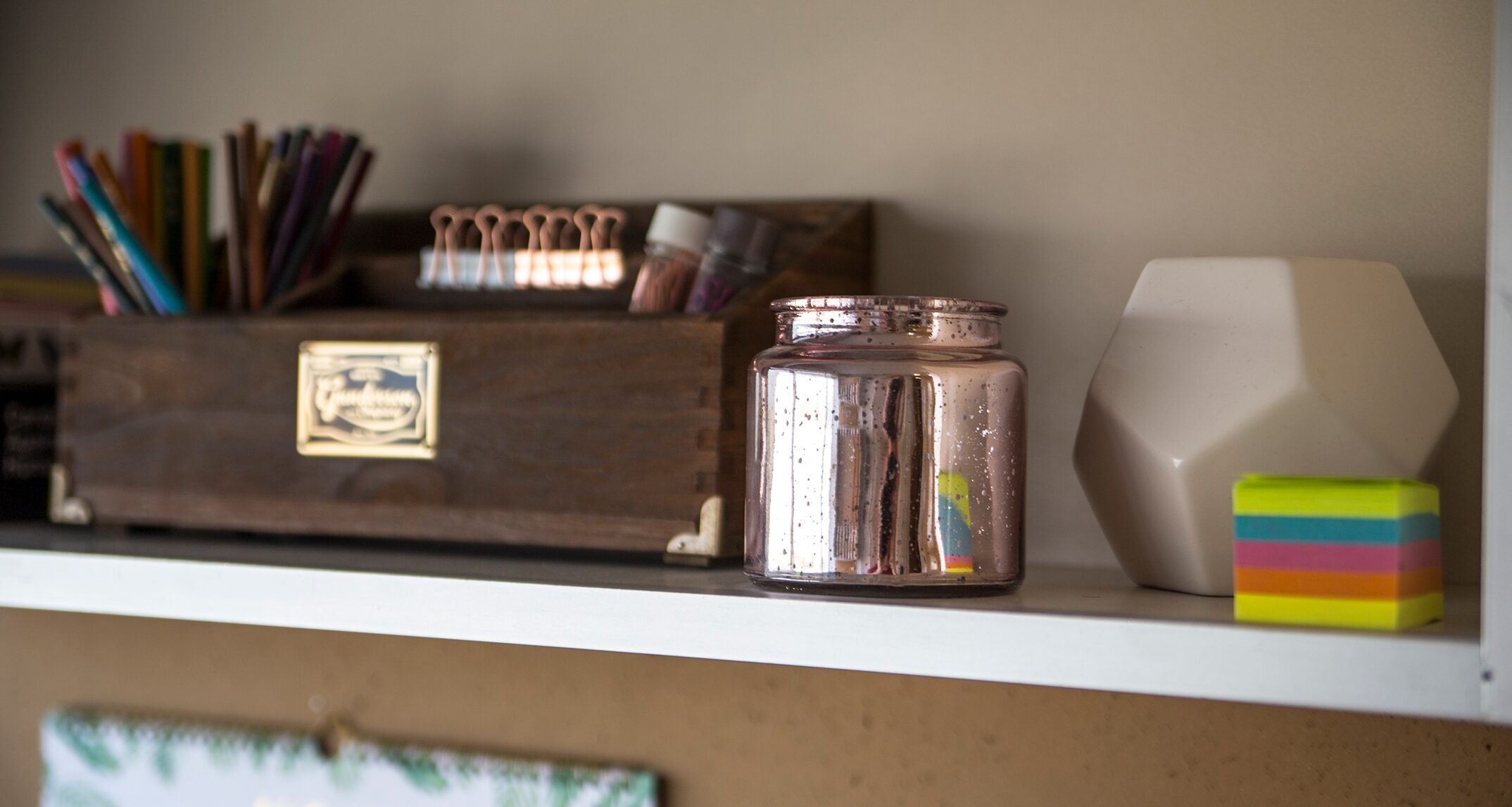
Organization is key in a limited space; and it can still echo your style preferences.
Layering
One of the easiest ways to bring depth and add visual interest to your space is to layer your materials. Introduce contrasting textures through your fabric selections, euro pillows, and throw blankets. The blend of different textiles will harmonize your belongings and bring a composed design unique to you.
Texturize!
People spend most of their college years in and out of residence halls and student life environments, and often times they don’t have much control over the furniture that comes with them. Try combining a variety of different textures to add a whole new life to your room. Mix linen bedding with a heavy knit throw & some fuzzy pillows. A knotty wool rug and some mud cloth poufs can add attractive, comfortable seating to a standard floor.
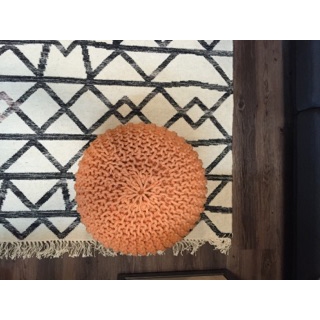
Incorporating multiple layers and textures is a simple way to enhance and personalize existing residence hall furniture.
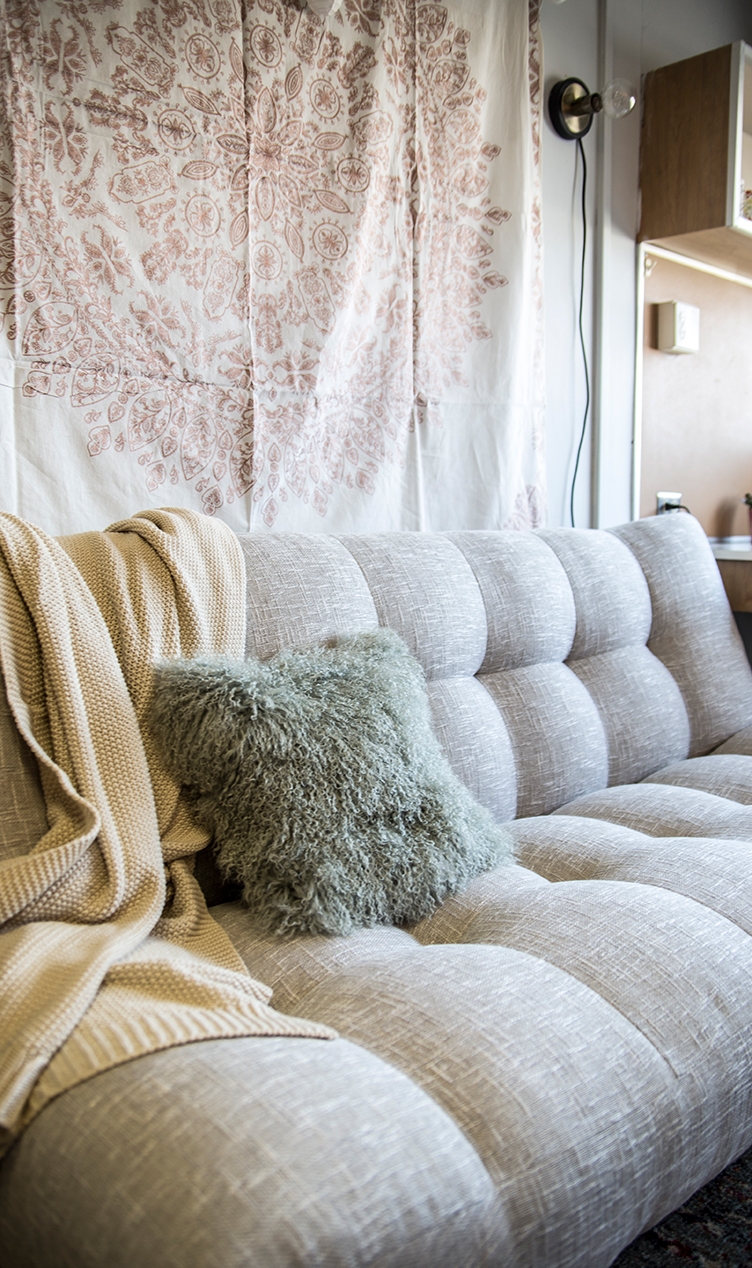
Whether you purchase a new comforter, hang a print by your favorite artist, or undergo a comprehensive room re-vamp, we gain important, psychological comfort by personalizing the space around us. When individuals are allowed to craft physical environments that reflect and reinforce who they are, they are more likely to express feelings of happiness, have better health, and be more productive.2, 3
References
1 Wells, M. M. (2000). Office clutter or meaningful personal displays: The role of office personalization in employee and organizational well-being. Journal of Environmental Psychology, 20(3), 239-255.
2 Borzykowski, B. (2017, February 3). What's so wrong with dressing up your desk? Retrieved from The BBC: http://www.bbc.com/capital/sto...
3 Gosling, S. D., Craik, K. H., Martin, N. R., & Pryor, M. R. (2005). Material attributes of Personal Living Spaces. Home Cultures, 2, 51-88.
